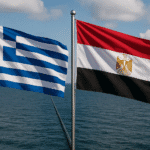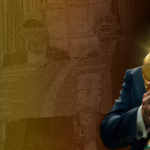U.S. President Donald Trump has embarked on his first international tour of his second term, visiting key Gulf nations—Saudi Arabia, Qatar, and the United Arab Emirates (UAE)—with the aim of securing substantial economic agreements and addressing pressing regional issues. During his visit, President Trump has focused on bolstering economic ties, with Saudi Arabia and the UAE committing to invest up to $2 trillion in the U.S. economy.
These investments are expected to span various sectors, including artificial intelligence, semiconductors, and infrastructure. Notable deals include Disney’s plans for a resort in Abu Dhabi and BlackRock’s partnership with International Holding Company.
In Qatar, discussions have centered around similar economic collaborations, with expectations of significant agreements being finalized. A significant point of contention has arisen from reports that President Trump plans to accept a luxurious Boeing 747-800 jet, valued at approximately $625 million, from the Qatari royal family. Intended for use as Air Force One, the acceptance of this gift has drawn bipartisan criticism over ethical and legal concerns. While the Department of Justice and White House counsel have deemed the gift legal, asserting it is offered to the U.S. government and not personally to Trump, critics argue it exemplifies potential corruption and foreign influence.
President Trump’s tour occurs amidst heightened regional tensions, particularly concerning Iran’s nuclear activities, the ongoing conflict in Gaza, and the situation in Yemen. Notably, Trump is scheduled to meet with Syrian President Ahmed al-Sharaa, who remains designated as a terrorist by the U.S. government. The meeting aims to negotiate the lifting of U.S. sanctions imposed during the Assad era, with discussions potentially involving access to Syrian natural resources for U.S. companies and Syria’s participation in the Abraham Accords.
In Yemen, a ceasefire between the U.S. and the Houthi movement, brokered by Oman, took effect on May 6, 2025, ending a series of U.S. attacks initiated in March. The Houthis agreed to halt attacks on vessels in the Red Sea, though they emphasized the ceasefire does not apply to Israel.
Notably absent from President Trump’s itinerary is Israel, reflecting current tensions between the U.S. administration and the Israeli government. Earlier this year, Trump proposed that the U.S. “take over” the Gaza Strip, redeveloping it into the “Riviera of the Middle East” and relocating its approximately 2 million Palestinian residents to neighboring countries. The proposal has been met with widespread international condemnation, with United Nations officials labeling it as ethnic cleansing.
President Trump’s Middle East tour underscores a strategic pivot towards economic diplomacy, aiming to secure substantial investments while navigating complex geopolitical landscapes. However, the trip has also ignited controversies, particularly regarding ethical considerations and regional stability, highlighting the challenges inherent in balancing economic ambitions with diplomatic responsibilities.













